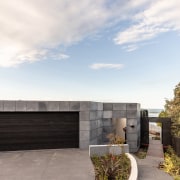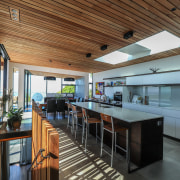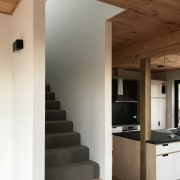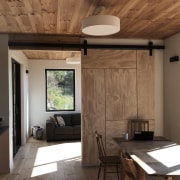Energy efficiency – as important as your home’s front door
Do things like energy efficiency and a thermal envelope work as afterthought? Answer? Not really. Architect Max Capocaccia of MC Architecture Studio outlines the importance of strategising for things like energy efficiency and a thermal envelope from the outset
From Max Capocaccia, MC Architecture Studio:
Currently, energy efficient homes tend to use a specific and separate form of design. They're quite often considered as being simple, using conventional geometries and in turn sacrificing “architectural artistry” in exchange for “efficiency”.
MC Architecture Studio doesn’t specialise in a specific design solution as such, but rather approaches every aspect of architecture holistically.
Good design is like walking a tight rope to achieve the best outcome for each project.
Careful consideration needs to be given to a number of items including energy efficiency, practical function, site-specific environmental aspects and, of course, the emotional response that each individual receives from the building through their own personal experience.
Ultimately we should be creating comfortable spaces for human beings and, no matter the level of complexity in form, energy efficiency is as much a necessity as a front door.
We think these two projects are good illustrations of this idea.
First, the Wall House showcases an artistically focussed brief which nevertheless has not sacrificed performance for form. The insulation installed in the building’s envelope is more than double required by the building code, and thermal bridging has been carefully considered and reduced.
Solid concrete walls and floors with a high thermal mass help regulate the indoor temperature to minimise heating and cooling costs. The well insulated envelope balanced with natural cross ventilation and careful space planning mean that this house does not require a mechanical cooling system.
To heat the building in winter, under-floor heating has been installed.
In contrast, the other project had a primary focus on creating a highly energy efficient home with reduced construction costs.
For this home, on the Port Hills in Christchurch, the form is simple and the spaces are not overly vast, allowing the internal spaces to be affordably performance enhanced and also resulting in a reduction in construction costs.
Attention to the building’s sun orientation and window placement takes full advantage of the solid timber floor’s thermal mass properties. Naturally, this floor helps to maintain the temperature of the interior spaces.
A mechanical ventilation system coupled with high levels of insulation and an air-tight envelope were used to achieve a controlled ambient temperature year round.
Extra attention to many other building design principles means that this small home is cost effective and high performing for its occupants.
Overall, these two projects with contrasting design briefs, have both achieved a high level of energy efficiency.
Homes should no longer be designed and constructed with energy efficiency and passive design treated as extras you can take or leave – rather, they should be permanently inscribed into all designs.
This dedicated approach in turn guarantees the creation of spaces we will enjoy being in, which after all, is how we should hope to live.
....................................................................................
Max Capocaccia of MC Architecture Studio is an award-winning architect and a member of the Trends Design Council.
Story by: Max Capocaccia, MC Architecture Studio
Photography by: MC Architecture Studio
Home kitchen bathroom commercial design















